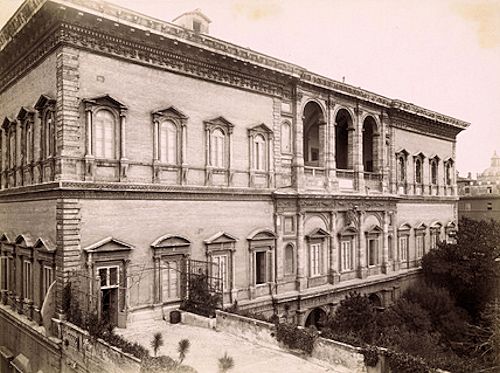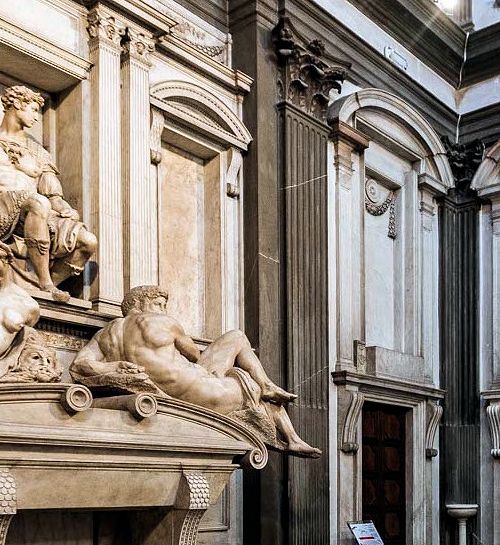history | not an easy book |
|
|
|
It is the texture of Mannerist rustication which clashes in the same way when it abuts the precise detail of the classical orders in a Renaissance facade. But Michelangelo's loggia in the center of the upper floor of the rear facade of the Palazzo Farnese in relation to the walls adjacent to it reflects a more ambiguous kind of contradiction. Giacomo della Porta's exceptional central elements on the floor below--pilasters, arches and architrave--vary only slightly in rhythm and not at all in scale, and the transition from the typical window bays on each side to the middle bays is consistent in detail and scale. The openings of Michelangelo's loggia above are violently contrasting in scale and rhythm with the typical elements to the sides as well as in the higher floor elevation which they imply. The pilasters also, because of their elevation and height, violently break the frieze below the cornice; and the cornice itself recedes rather than advances to match the projections and boldness of the elements below it. The scale of this cornice is smaller because of the increased rhythm of the modillions, yet the modillions themselves (lions' heads) are identical to those on the other cornice and the mouldings are continuous throughout. Similarly ambiguous combinations of contradictions both juxtaposed and adapted, occur in the intermediate bays within the niche.
|
In Michelangelo's Medici Chapel in San Lorenzo the almost furniture-like scale of ornament of the marble elements within the bays abuts the very big scale of the giant order of pilasters. Classical orders make for another kind of contrasting adjacency when the giant order is
juxtaposed on the minor order and the proportion is constant regardless of size.
|
Jefferson's combinations of column sizes at the University of Virginia contradict the maxim that every magnitude requires its own structure. But the juxtapositions of elements contrasting in size yet proportional in shape, like the pyramids of Gizeh, characterize a primary technique of monumentality.
|
3202o
| Quondam © 2020.01.17 |



